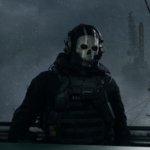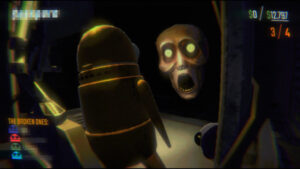Advertisement
Popular Now
In the fast-paced sci-fi universe of **R.E.P.O.**, players are thrust into a dystopian future where agents recover defaulted assets by force. The game’s distinct blend of high-octane action and strategic squad-based mechanics has earned it a cult following. However, amid its gunfights and neon-lit alleys lies a major issue that has drawn growing concern from the community: the **AI pathfinding system**. This article explores, in-depth, how broken or inefficient AI movement is crippling R.E.P.O.’s tactical gameplay, influencing player strategy, enemy design, and the game’s long-term replayability.
The Foundation: How AI Pathfinding Works in R.E.P.O.
At the heart of R.E.P.O.’s tactical layer is its AI system—specifically how allies and enemies navigate the game’s dynamic environments. The engine utilizes a **navigation mesh (navmesh)** system to define walkable surfaces and trigger decision-making processes for movement. In theory, this allows AI characters to intelligently avoid obstacles, take cover, and flank enemies.
However, the implementation is often flawed. Characters frequently take nonsensical routes, get stuck on terrain, or completely disregard optimal positioning. This happens particularly in multi-level environments, or in missions with destructible objects and shifting layouts.
R.E.P.O. features procedural mission layouts to enhance replayability. But this approach clashes with AI that can’t dynamically interpret new terrain. Without re-calculating navmeshes on-the-fly or using adaptive algorithms, the system collapses under complex environments.
Phase Two: The Launch Day Chaos
On launch day, forums and Reddit threads exploded with complaints about bot allies standing in fire, blocking doorways, or walking in circles. Players initially thought it was a bug—but the issue was systemic. Missions like “Factory Purge” and “Asset Retrieval: Cairo” became infamous for AI breakdowns.
Enemies were not exempt either. Some would charge into walls or get stuck in endless loops, robbing the game of its challenge. This made what should be white-knuckle shootouts feel like slapstick comedy routines.
The AI’s failure to move intelligently undermines dramatic tension. What should feel like a cinematic experience feels instead like herding toddlers through a warzone.
The Future of AI in R.E.P.O.
With increasing competition in the tactical-action genre, R.E.P.O. must address its AI pathfinding if it wants to retain its player base. The community remains loyal but frustrated, and each patch is under heavy scrutiny. There is talk of a full AI overhaul in version 2.0, but no timeline has been given.
There is potential here. R.E.P.O. still offers a unique premise and bold mission structure. With better AI, it could evolve into a flagship title for sci-fi tactics. But without fixing the pathfinding, it risks becoming a cautionary tale of ambition outpacing execution.
**Conclusion**
The AI pathfinding system in **R.E.P.O.** is a critical flaw in an otherwise ambitious tactical shooter. From beta promise to launch day chaos, and from procedural generation conflicts to exploitable maps, broken AI navigation impacts every corner of the game. It undercuts strategy, immersion, narrative pacing, and fair progression. Unless addressed in a meaningful way, this issue may overshadow the game’s rich potential. The fans remain hopeful—but the clock is ticking.
Why Pathfinding Matters in Tactical Games
- **Cover System Dependency**: R.E.P.O. leans heavily on a cover mechanic, but poor pathfinding causes AI to stand exposed.
- **Player Strategy Breakdown**: Tactical plans collapse when allies or enemies don’t behave predictably.
- **Immersion Loss**: Watching an elite agent get stuck behind a crate for 20 seconds breaks the dystopian illusion.
Developer Oversight: The Procedural Generation Trap
Impact on Game Modes
- **Solo Missions**: Players controlling only one character felt the least impact.
- **Co-op and Squad Control Modes**: These became borderline unplayable when relying on AI behavior.
- **Challenge Mode**: Timed missions suffered as allies couldn’t keep up with player movement.
Invisible Cover Zones and “Ghost Pathing”
Players discovered a related bug where certain map zones were labeled as cover but weren’t accessible due to navmesh issues. The AI attempts to reach these zones endlessly, resulting in repetitive running animations in place. Mid-Life Fixes: Patch Attempts and Workarounds In Patch 1.3, developers attempted a fix using **dynamic navmesh generation**. While this improved some static environments, procedural ones still posed problems. The update also introduced new bugs—such as enemies teleporting when pathing calculations failed. The community responded by creating modded versions of maps with static layouts. These helped stabilize gameplay but removed one of the game’s key selling points: dynamic mission generation.Community Tools and Mods
- **"PathClear" Mod**: Strips down level complexity to ensure AI doesn’t get stuck.
- **"Tactical Pause AI Override"**: Gives players manual override on AI movement decisions during pauses.
Suggested Improvements from Players
Redditors have proposed a hybrid system where players can draw paths or zones manually for their squad, bypassing the navmesh entirely. Others want a grid-based movement system akin to turn-based tactics games. Enemy Behavior and Exploits On the enemy side, AI breakdowns introduce glaring exploits. Players can kite enemies into known “pathing loop” areas where they will spin or get stuck. This allows trivializing boss fights and earning high-value loot with minimal effort. This isn’t just bad for immersion—it breaks the economy of the game. Players can farm high-level missions solo by exploiting pathfinding glitches, undermining cooperative play and fair progression.Exploitable Maps
- **Mineshaft Delta-3**: Known for elevator glitching enemies.
- **Downtown Siege**: Boss gets stuck on balcony corners.
- **Vault Recovery**: Enemies walk through fire traps continuously.


















